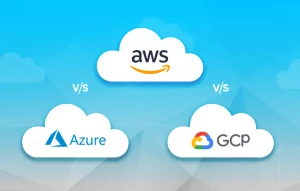In the beginning, companies did not show much interest in a rather novel concept called – cloud. Safety and collaboration were two big bottlenecks, but this has changed slowly and steadily. Companies have gained confidence in cloud computing and have begun to explore what it has in store for them. Companies have started to run a cloud based collaboration platform to team up with other branches of their business. They know its capacity to exploit modern technologies and the shared environment would take them further. At the moment, every industry vertical is eying it. If prediction by IDC is anything to go by, the public cloud computing will reach almost $70 billion in 2015 worldwide.

Cloud strategy and assessment workshop
The adoption of cloud-based infrastructure by enterprises is increasing greatly. However, a lot of enterprises are still reluctant to adopt a cloud strategy due to lack of skills or knowledge.
Healthcare
Healthcare has seen a spectacular growth in the last few years. Improvements in the Health sector have intensified since the government has actively started taking healthcare as a major development objective. Cloud computing is further driving healthcare IT and the cloud helps them to have reduced cost in adopting clinical information system in each healthcare facility.
According to a market report published by Persistence Market Research, “The global healthcare cloud computing market is estimated at USD 4,216.5 million in 2014 and is expected to reach USD 12,653.4 million in 2020, growing at a CAGR of 20.1%.”
Looking at all the healthcare IT facts and figures, one thing is sure that the sector is highly benefitted by cloud computing, especially on the basis pay-as-you-go model which dramatically reduces the operational cost of the hospital IT systems. Various branches of the healthcare system including healthcare providers, healthcare payers, pharmacies, insurance companies, etc. are getting under one roof and making the entire health care system perform efficiently and serve the patients better. This scenario clearly encourages the healthcare system and it shows an amazing growth rate.
- 83% of IT executives in healthcare provider organizations report they are using cloud services today. (2014 HIMSS Analytics cloud Survey)
- 92% of healthcare providers now and in the future see the value of cloud services for their organizations.
- 55.7% say the top reason for adopting a cloud solution is less cost than current IT maintenance (2014 HIMSS Analytics cloud Survey)
Banking
Like any other sector, banking also finds exceptional improvements as the cloud instills more faith in them. Customers indeed enjoy the power banks offer to them. Customers want more connectivity with the bank and cloud can make things easier and safer for the customers by following standard technologies. The devices are regularly patched and made up-to-date automatically with the help of cloud computing. Also customers have the power to use personally identifiable number (PII) in the cloud which lets them feel secured.
Perhaps banking sector would have been the most reluctant at first in using cloud due to the security concerns but the over the years they gained confidence and started reaping its benefits. Cloud IT and business model would increasingly help them to find newer ways to maximize profitability and returns.
Huge investment required for advanced IT infrastructure comes as a stumbling block. This is going to be a thing of the past because the pay-as-you-go model allows the banks to invest just on functional expenses for the services they use. It is cost effective and desirable which means banks and financial institutions will certainly go for it. The banks can use the hardware, software, and other services as they require from powerful computers deployed in the cloud through the Internet. Banks are growing in terms of more personal banking and data and they need more computing capacity. Banks are enjoying various cloud services that include data center management, data storage, and disaster recovery which is actually positioning the banks to responds to uncertainties effectively and gain more self-assured customers.
Automobile
When comparing to other verticals automobile has delayed their cloud adoption. They showed hesitancy in shifting from the on premise set up to cloud. The late and fewer adoptions may be due to the complexity of legacy IT ecosystem which has to deal with interoperability issues. As the importance of infotainment gets greater, companies have started investing on it and cloud ensures the best of the infrastructure for its development.
The bigger adoption is seen when car companies are starting to use cloud services for building infotainment to enhance customer experience. The auto infotainment will be significantly improved by cloud computing. This can strengthen a number of existing car technologies including vehicle tracking, GPS systems, parking, Internet access and voice commands, and the like. Cloud computing can lead to betterment of these technologies and can reach newer heights.
The Internet of Things (IoT) concepts would play another important role as automobile companies would want to take their part in the revolution which would allow a major upheaval. Also they know the power of big data and consumer analytics which all can be empowered by cloud adoption. They have to store the enormous amounts of data generated from their business processes and they know cloud is the best solution for storing their data. Cloud would help the automobile companies to reduce their IT cost as they can get the datacenter activities on cloud. As cloud computing gets more robust and transparent the automobile industry has begun to shed its inhibitions and is ready to migrate their IT infrastructure and the projects on the cloud for better outcomes.
Manufacturing
The constant pressure to perform better should be one of the reasons why manufacturing companies have become the early adopters of cloud technology. The manufacturing industry witnesses rapid changes globally with interconnected, smart manufacturing machines and cloud business model. There is greater collaboration among the company branches located in different parts of world. Cloud computing model enables easy storage and computing. The data is stored in the cloud which is generated from various manufacturing processes and insights are derived from these data.
The process can be improved by a range of functions offered by cloud computing; product life cycle management, supply chain management, order entry, tracking etc., are a few to name. Other than increased industrial automation capabilities, cloud computing is providing more powerful and cost effective solutions to modern manufacturing to improve operations and reach to newer markets.








